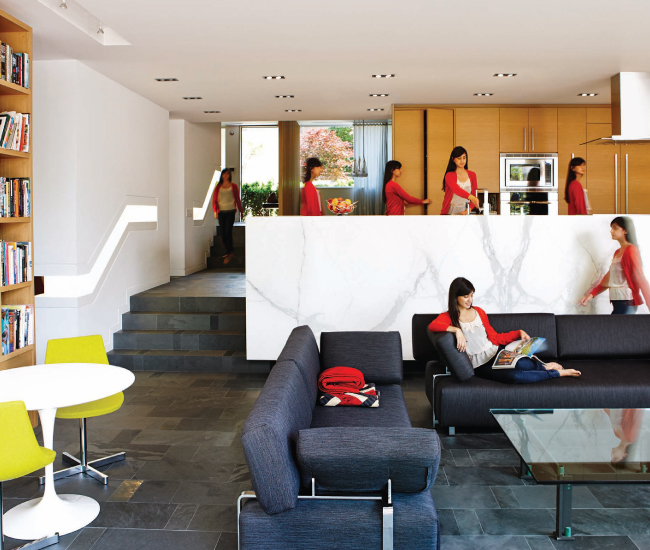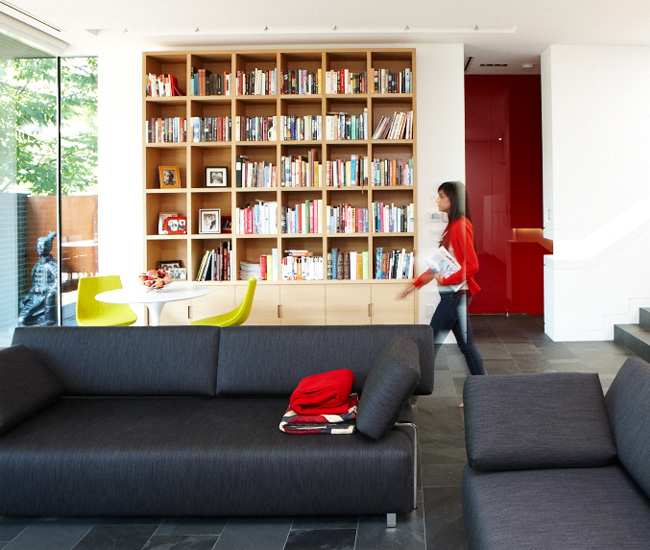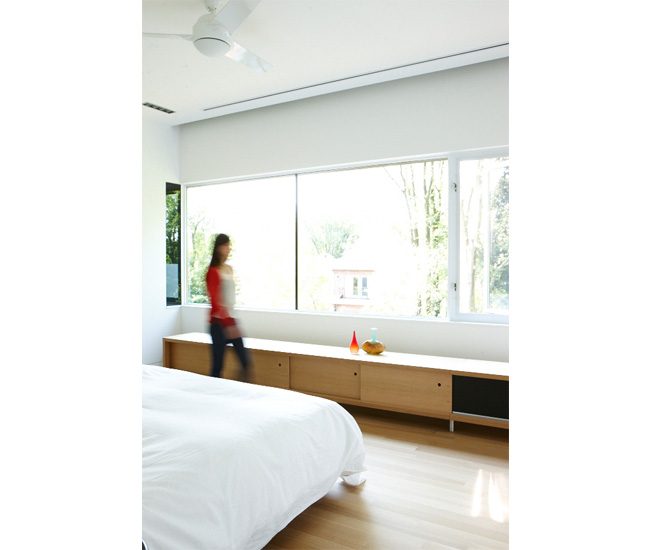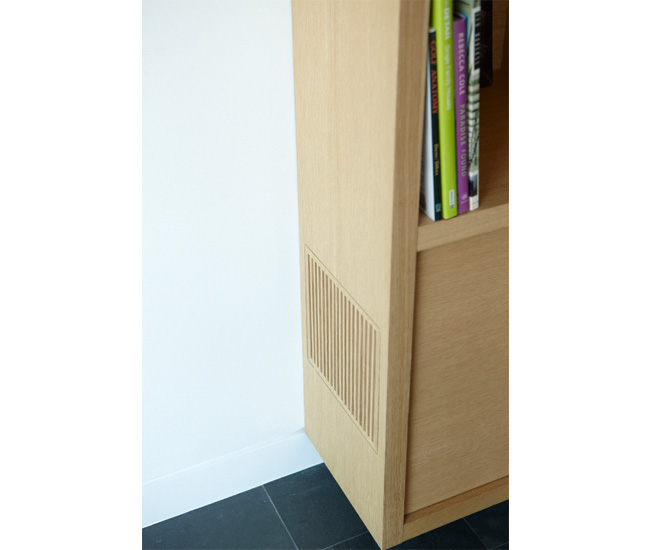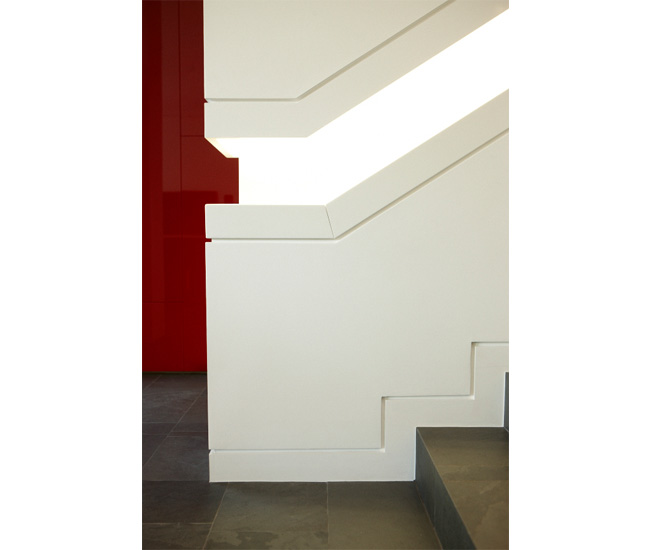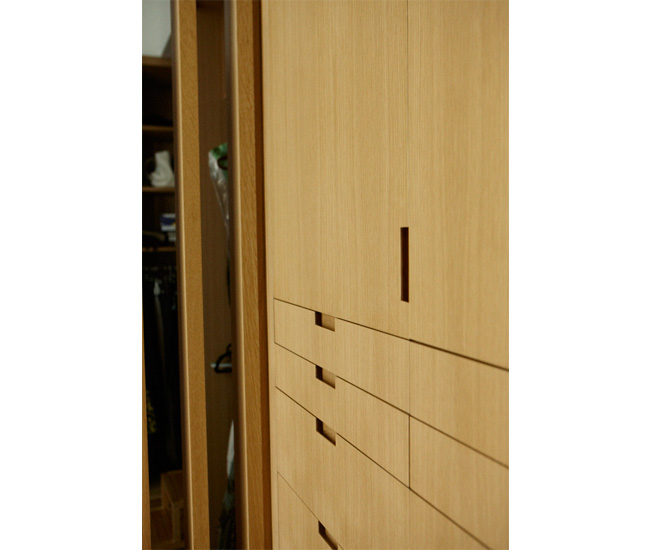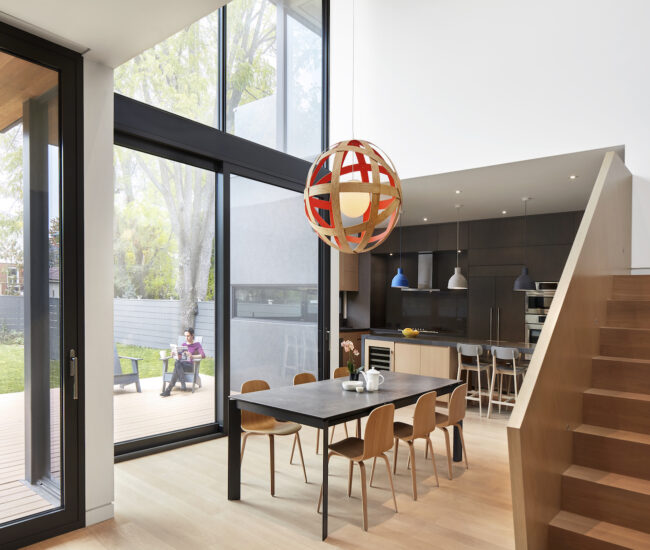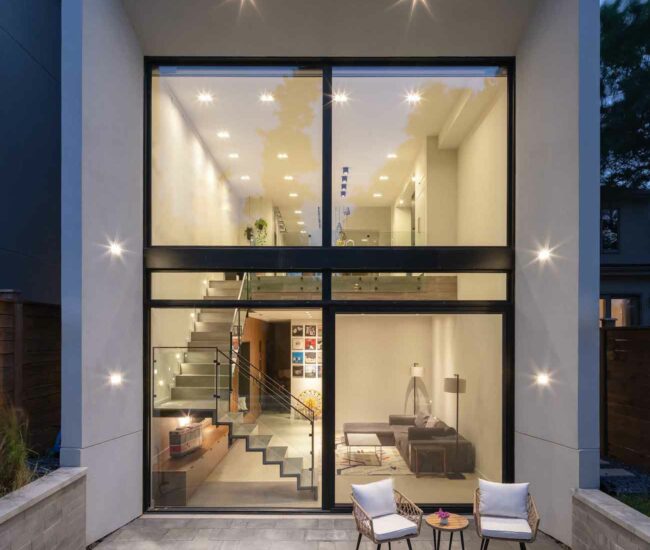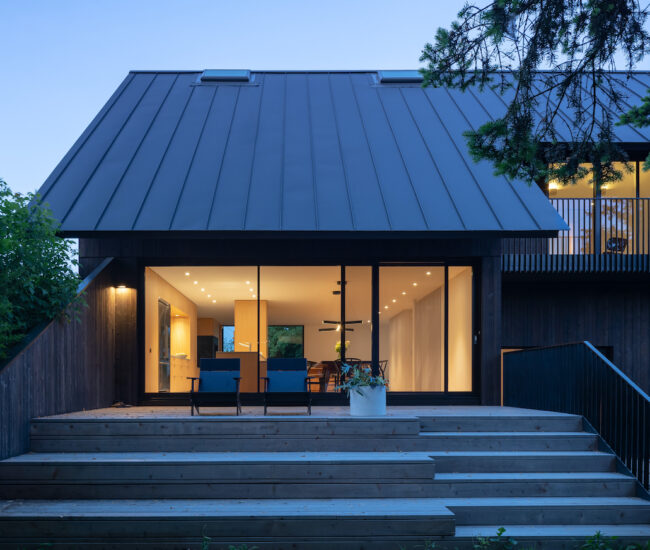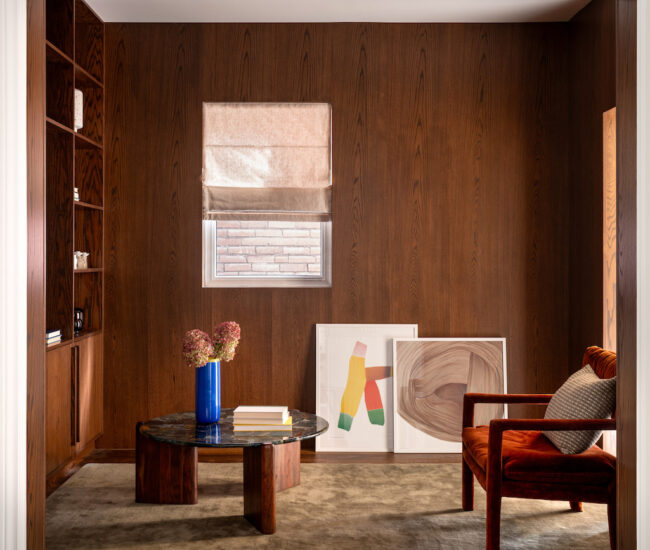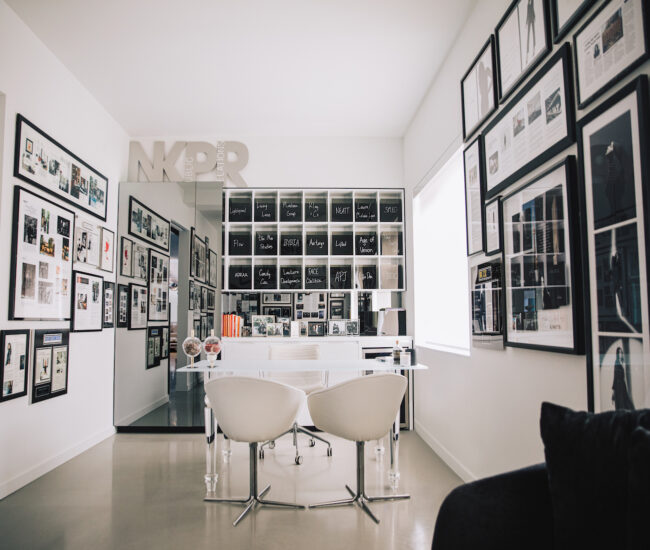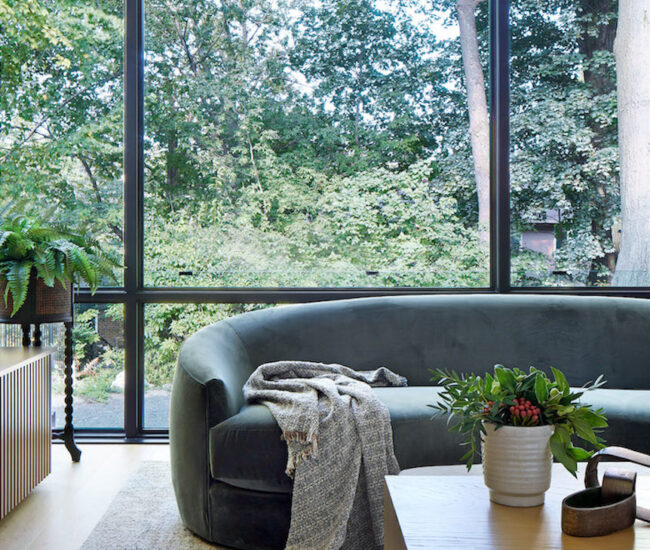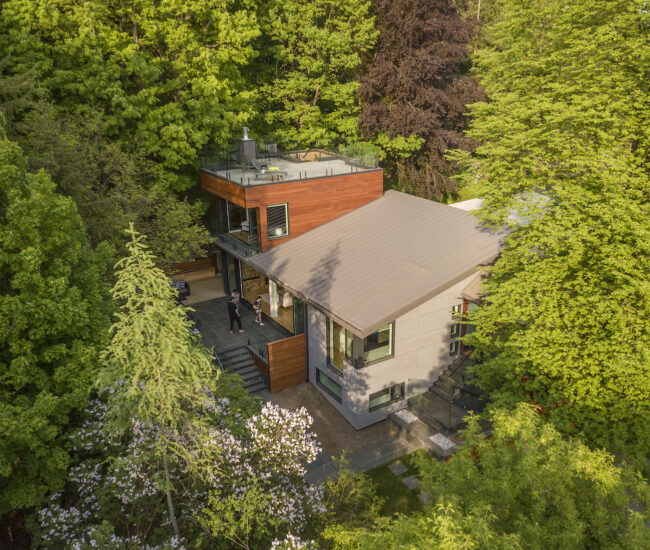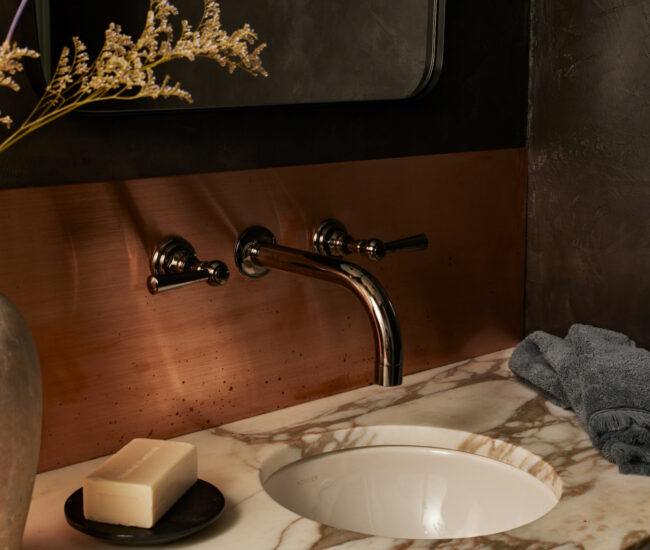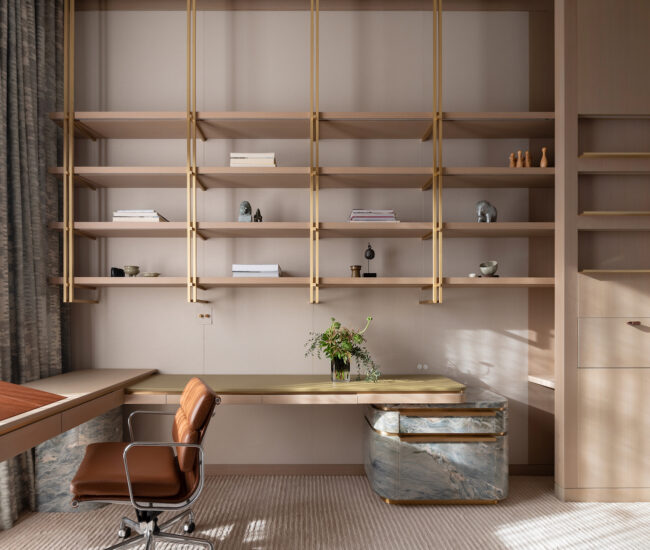A Forest Hill Home With a Mediterranean Layout
Form and function come full circle in this family home by Kohn Shnier architects
A distinctly modern three-bedroom house in Forest Hill stands out from its neighbours in more ways than one. In stark contrast to its pitched-roof counterparts with their centre-hall plans – dining room and kitchen on one side of the hall, living room on the other – this home has a Mediterranean layout. When you open the front door, you can see all the way out to the garden.

Iron-spot bricks and tinted glazing present an austere face to the street. Step inside, though, and you’ll find the home is filled with light. Designed to fulfill the dreams of a semi-retired couple, it’s not exactly an empty nest. The house regularly accommodates visiting children and grandchildren.

To the right of the foyer is a vibrant red wall of back-painted glass that runs the entire height and length of the house. The main floor is open-concept: a short flight of steps leads from the entry to the dining area and kitchen. The living space can be accessed from two short runs of stairs on either side of the enormous kitchen counter overlooking it. From here, a massive sliding glass door leads to a deck and an infinity pool bordered in black porcelain tiles.

Linking the house’s three levels, the red glass wall turns the stairs from object into experience. Its reflective qualities capture glimpses of the outdoors, while changes in daylight cast pink hues onto the white walls. “It gives you something different every time,” says architect John Shnier of Kohn Shnier, who designed the home.

The same is true for the rest of the house. From the upstairs landing, the second floor can be circumnavigated in two directions. Head left and you’ll come to the guest rooms; go right, past a concealed office, and you’ll come to the master bedroom, which overlooks the pool. On the far side of the room, the path continues. Round the corner and you’ll find a walk-in closet, master bath and a few short steps that lead to a second office. From there, a hallway completes the circuit, taking you past the guest rooms at the front of the house and back to where you started: the main staircase and the red wall.

Shnier doesn’t believe in dead ends, which explains the circuitous layout of the second floor. “Doubling the design experience,” he calls it. “Exceed expectations by creating things that couldn’t have been predicted.”

“Ask someone what they want in a house,” he says, “and they’ll most likely give you a list of rooms.” Shnier had his clients write a short narrative describing a typical morning in their household, their relationship with their children, how they want to spend the rest of their lives. “I gleaned a lot from their text,” says the architect. “This drove a design that seeks to constantly surprise and delight; an architecture that has impact but also a lasting appeal that they will never tire of.” KOHNSHNIERARCHITECTS.COM

